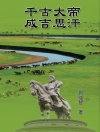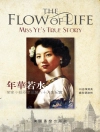In ‘Kate Coventry: An Autobiography, ‘ G. J. Whyte-Melville presents a compelling narrative that oscillates between the realms of autobiography and fiction, exploring themes of identity, social class, and the intricacies of Victorian society. The book is crafted in a rich, lyrical style that captures the emotional turbulence and societal constraints of the protagonist, Kate Coventry. The literary context of the novel is situated within the broader tapestry of Victorian literature, reflecting the period’s fascination with the autonomy of women and their roles within both domestic and social arenas. Melville’s keen observations and vivid descriptions add depth to Kate’s struggles and triumphs, making her story resonate in a manner that is both personal and universal. G. J. Whyte-Melville, a contemporary of authors such as George Eliot and Charles Dickens, was himself a horseman and a keen observer of society, factors that deeply influenced his narrative style and character development. His experiences in the rural landscape and an interest in the lives of women during this period lay the groundwork for Kate Coventry’s character. Whyte-Melville’s ability to weave personal insight with societal commentary is evident throughout the autobiography, making it both a personal narration and a social critique. This book is highly recommended for readers interested in Victorian literature, feminist narratives, and character-driven storytelling. ‘Kate Coventry’ not only provides an engaging glimpse into the struggles of a spirited woman seeking her identity but also serves as a mirror to the complexities of societal expectations during the 19th century. Whyte-Melville’s prose offers a rich exploration that will captivate and resonate with modern readers.
Про автора
George John Whyte-Melville (1821-1878) was a notable Scottish novelist and poet in the 19th century, distinguished for his works that often centered around themes of fox hunting, horsemanship, and the Victorian era’s military life and gentlemen’s society. Born to a noble family in Fife, Whyte-Melville was educated at Eton, and in the course of his life he became a skilled horseman and served in the British army. After retiring as a captain, he embarked on a literary career, enriching the genre of Romantic and historical fiction with his vivid prose and evocative storytelling. Whyte-Melville’s celebrated novel, ‘Kate Coventry: An Autobiography’ (1856), exemplifies his literary style, replete with autobiographical elements and the charming rural life that was so cherished by him. His works, while not universally known today, played a significant role in capturing the essence of his era and contributed to the genre of sporting novels. Whyte-Melville penned over 20 novels, including ‘Digby Grand’ (1853) and ‘The Brookes of Bridlemere’ (1866), and while they may not be in the canon of classic British literature, they remain important for their cultural and historical portrayals of 19th-century British aristocracy and lifestyle.












